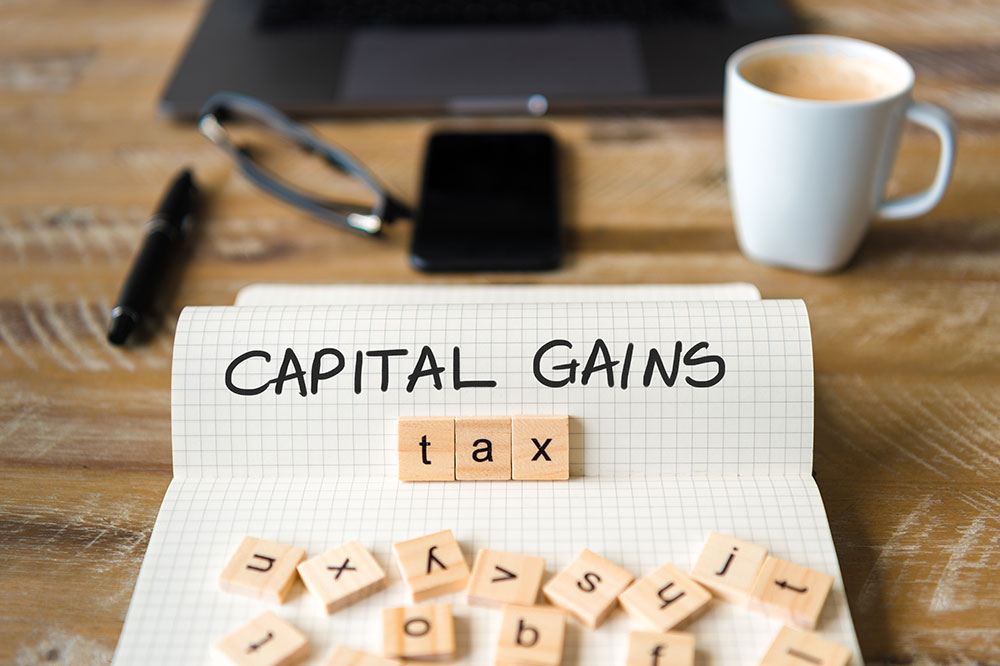5 Effective Strategies to Lower Capital Gains Taxes
Capital gains and taxes on them are important concepts in the realm of finance and taxation. It refers to the profits one earns from the sale of assets, which are usually subject to government taxes. Understanding how they work is essential for both individuals and businesses alike, as it helps them understand their financial obligations and affects one’s investment choices.

What are capital gains?
Each time one sells an asset like property, bonds, stocks, cryptocurrencies, cars, other vehicles, or even expensive jewelry, one earns a sum of money which is termed capital gains. These gains, known as profits in simple terms, are usually taxed by the federal government. It’s important to note that one pays the tax only after the sale of assets and not for simply owning or holding them. Capital gains taxes are progressive in nature, so the more one earns through the sale of assets, the more tax one pays. This promotes economic fairness as individuals with higher incomes pay more than those with lower incomes.
How do capital gains taxes work?
The tax rates can vary on different factors, including one’s overall income, filing status, and total number of years one has owned the asset. The tax rate is usually 0%, 15%, and 20% on assets held over one year. These are called long-term capital gains tax. The Internal Revenue Service (IRS) claims that most people only pay 15% on their long-term capital gains tax.
On the other hand, the tax rates for holding an asset within a year of purchase are slightly higher. These are similar to the income tax brackets, which are from 10% to 37%. Short-term capital gains are usually higher because the government wants to promote economic growth, encourage risk-taking amongst investors, and boost economic activity in the country. Incentivized long-term investments encourage people to invest and hold onto assets for long.
Strategies to minimize or avoid paying capital gains tax
Some strategies can help individuals and businesses minimize their tax liability on capital gains:
- Hold assets for over a year
The simplest way to avoid paying capital gains is to hold on to the assets for the long term since short-term tax is higher. It’s best to keep any assets for over a year. One can also wait until retirement to enter the lower tax bracket before availing of the capital gains. - Exemptions on home sales
The IRS provides a few exemptions for those who own a home. One must own a house and use it as their primary residence for two to five years before selling it off. Secondly, during the two years before the sale, one should not have excluded gains from another home sale. If one fulfills these conditions, one can get an exemption of up to $250,000 in capital gains if one is single or up to $500,000 if one is married and opts to file taxes jointly. - Gift appreciated stocks to charity
Instead of donating cash to charities, one can donate appreciated stock to them. One will still get the same tax deduction, but when the charity sells the stock, they don’t have to pay any capital gains tax. So essentially, by donating stock instead of cash, one can give the same amount to the charity while avoiding capital gains tax on the stock one would have sold. Apart from charities, one can also give these appreciated assets to one’s heirs. - Opt for retirement accounts
Contributing a portion of one’s income to an employer-sponsored IRA (Individual Retirement Account) or an individual retirement account 401k can help one to minimize the tax. Holding money in these tax-advantaged accounts does not subject one to capital gains taxes. This also enables individuals to move into lower tax brackets while making significant savings for retirement. Having said that, one may be subject to capital gains tax upon withdrawing the money from these accounts post-retirement. - Optimizing investment dividends
Instead of using the dividends one receives from a stock investment to buy more of the same investment, one can consider investing that profit money to buy more of the underperforming but promising assets. This way, one can avoid selling the investments that are doing well and generating capital gains taxes.
What if one incurs capital loss?
An asset may occasionally be sold at a considerable loss, meaning that the selling price is lower than the cost of acquisition. The government evaluates the loss differently in this situation, and the owner of the item may claim a loss of up to $3,000 on their tax returns. This enables the people to lower their taxable income. If the loss is more than the $3,000 cap, it may be carried over to future tax years.
One’s advised to consult with a tax professional to understand the specific rules and contribution limits of one’s individual assets before making any sales. This will give one a better understanding of one’s financial standing and tax implications and, in turn, help one to optimize one’s gains.


